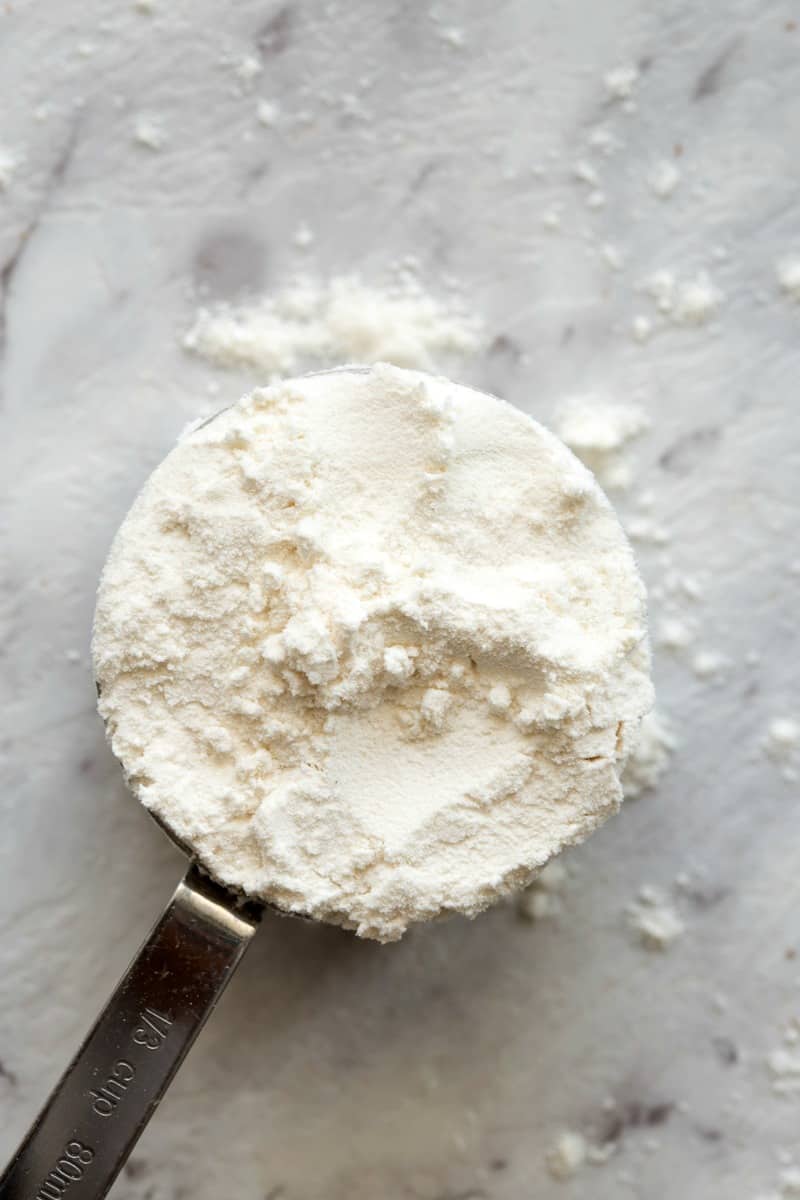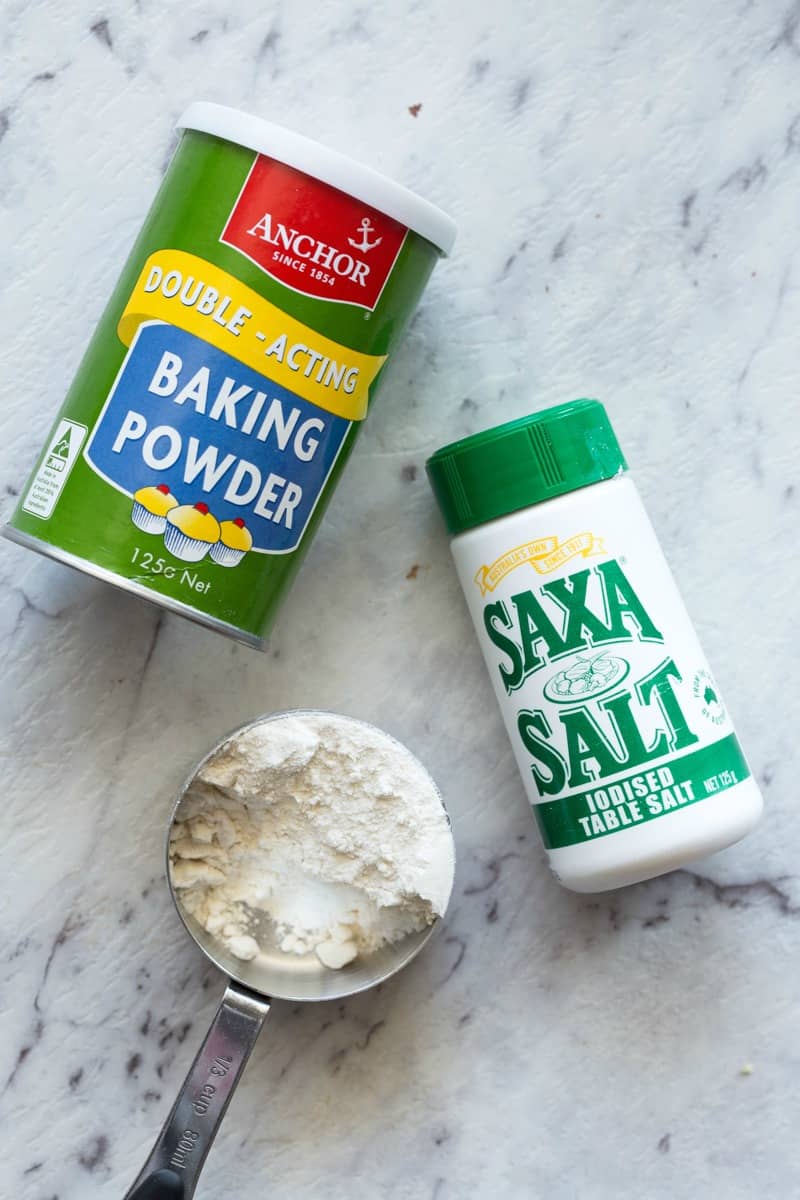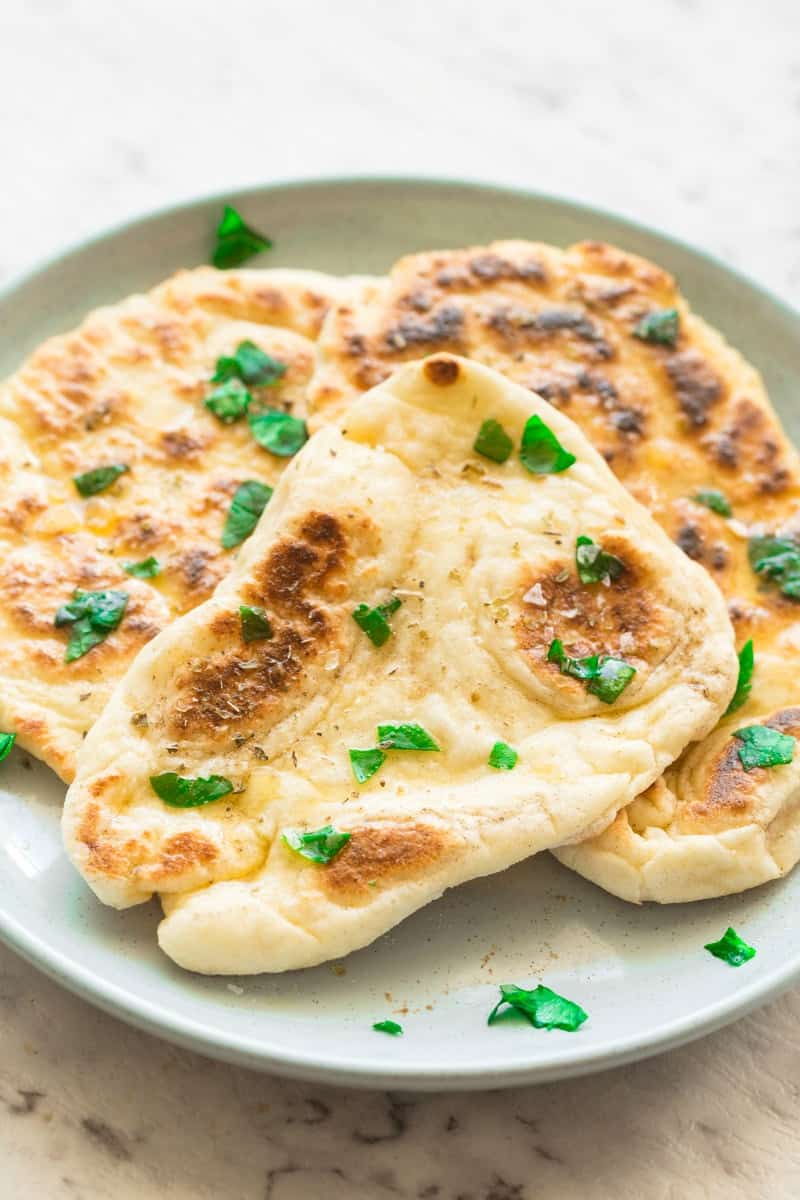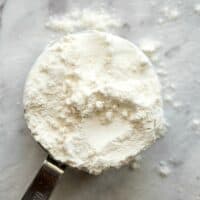How To Make All Purpose Flour Into Self Rising Flour
Find a recipe that needs self-rising flour and don't have any on hand? Easily make your own using just 3 simple ingredients!

We are all facing flour shortages right now.
We are all also keen to jump in the kitchen and start making a slew of recipes we've been hoarding for years, but never get around to making them.
I get it. I'm in the EXACT same boat.
Many of you told me yeast has been near impossible to find, so I've done my best to accommodate you. I've shared a plethora of yeast-free recipes, including this foolproof yeastless bread (made with NO buttermilk, either!).
I've also shared many more yeastless bread recipes, often using minimal ingredients and requiring no fancy mixers.
However, the key ingredient in all of them is one that some of you have said has been hard to find- Self-rising flour!
Self-Rising Flour VS All-Purpose Flour
Self-rising flour (or self-raising flour, depending on where in the world you are located) is not the same as all-purpose flour.
All-purpose flour is made from wheat and is the most commonly used flour. It is used in baked goods (like cakes and muffins), pastries, to thicken sauces and also used as a coating for proteins (like meat, tofu, seafood, etc).
Self-rising flour, on the other hand, contains mostly all-purpose flour but also has salt and baking powder added to the mixture.
The beauty of self-rising flour is that no leavening agents are generally needed for recipes calling for it, as the dough will naturally rise. This is due to the pre-mixed baking powder.
I love using self-rising flour for recipes that you want to be fluffy on the inside and tender on the outside. Pancakes, muffins and scones/biscuits are great examples.
How to make homemade self-rising flour from scratch
Making homemade self-rising flour is ridiculously quick and easy, and involves just 3 ingredients- all-purpose flour, baking powder, and salt.
In a large mixing bowl, combine your ingredients and mix very well. Transfer the flour into a sealable container and use it in recipes calling for self-rising flour!

Can you use self-rising flour instead of all-purpose flour in a recipe
Unfortunately, you cannot simply substitute self-rising flour for all-purpose flour in a recipe. The recipe that contains all-purpose flour likely already has ingredients in it. These include baking powder, baking soda, vinegar, or even eggs. Those will help leaven things out and produce the rise, leavening and/or texture required.
By substituting all-purpose flour with self-rising flour, you will likely see the cake/muffin/pie etc, rise over the top and in some instances, even explode.
Can I use self-rising flour instead of plain flour and baking powder?
I don't recommend you use self-rising flour instead of plain flour and baking powder in a recipe.
The reason being, the amount of baking powder in self-rising flour can sometimes be quite different to what a recipe that has all-purpose flour and baking powder in a recipe.
When it comes to self-rising flour, the baking powder is pre-mixed in and distributed throughout, so it will throw your proportions out of balance.
What happens if I add baking powder to self-rising flour?
Sometimes, texture-wise, you won't see much of a difference, provided the amount is minimal.
With that said, you WILL be able to taste it, and it will leave the recipe quite bitter.
Can I use gluten-free flour to make homemade self-rising flour?
I don't recommend you make homemade self-rising flour with gluten-free all-purpose flour.
Gluten-free all-purpose flour in itself has other binders and agents in it. When baking powder is added to it, it can really change the structure.
I recommend using this gluten-free self-rising flour– I have tested it on all my recipes calling for self-rising flour, to keep them gluten-free.

What do you use self-rising flour for?
If you've been around here the last few weeks, I've shared a plethora of BREAD recipes that require NO yeast and uses self-rising flour.
- 2 Ingredient Dough Bagels
- Homemade No Yeast Pizza Dough
- Soft Pretzels
- 2 Ingredient Dough Cinnamon Rolls (No yeast!)
- Homemade flatbread
- Garlic Knots
- Baked Donuts (2 options!)

- 4 cups all-purpose flour
- 2 teaspoon salt
- 2 tablespoon baking powder
-
Combine all your ingredients in a large mixing bowl, and whisk together, until fully combined. Transfer to an airtight container.
Homemade self-rising flour must be stored in an air-tight container.
You may also like homemade oat flour.
Serving: 1 cup | Calories: 458 kcal | Carbohydrates: 97 g | Protein: 13 g | Fat: 1 g | Sodium: 1801 mg | Potassium: 134 mg | Fiber: 3 g | Calcium: 371 mg | Iron: 6 mg | NET CARBS: 94 g
How To Make All Purpose Flour Into Self Rising Flour
Source: https://thebigmansworld.com/how-to-make-self-rising-flour/
Posted by: cottonsweves.blogspot.com

0 Response to "How To Make All Purpose Flour Into Self Rising Flour"
Post a Comment